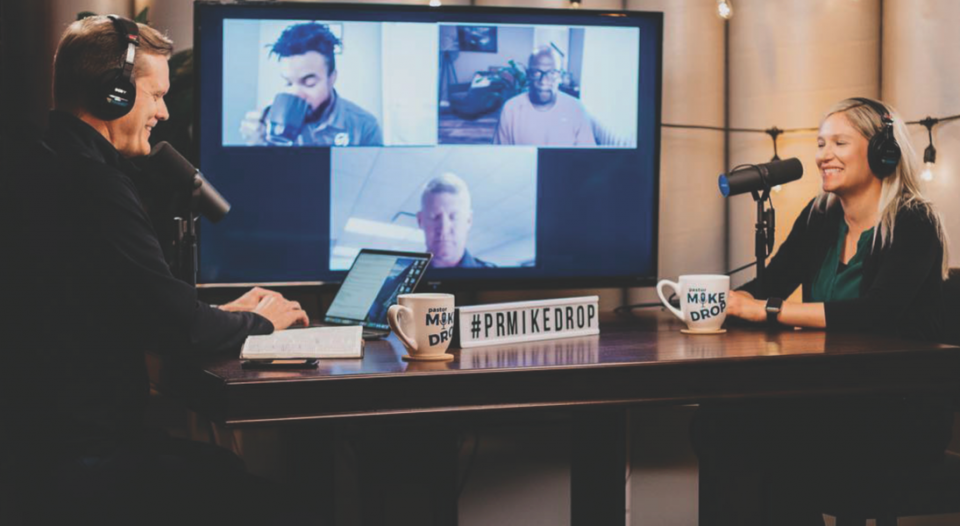As Matthew 18:20 reads: “For where two or three are gathered in my name, I am there among them.” Lutheran congregations around the country found new meaning in this passage when COVID-19 closed sanctuaries in mid-March.
When faith communities couldn’t worship in person, congregations scrambled to stream online worship using Facebook Live, YouTube and other platforms. They also engaged members by emails, texts and phone calls.
Several congregations reported increases in worship attendance through these virtual means, especially during Holy Week and Easter.
Statistics from Barna Group, a California-based faith and culture research firm, give a national perspective. In its article “Current Trends in Virtual Attendance & Weekly Giving Amid COVID-19,” Barna reported that 44% of the more than 600 Protestant pastors surveyed said their congregation’s virtual attendance was higher than typical in-person Sunday worship attendance.
“I know that we’re reaching audiences that we wouldn’t normally.”
ELCA Presiding Bishop Elizabeth Eaton echoed this in a video message on May 7: “We know that our congregations are now livestreaming worship services—congregations that would never have done that before—and not only reaching their own people, but people who had never come into a church to hear the good news of Jesus are now hearing it and receiving it.”
Mike Housholder, a pastor of Lutheran Church of Hope in central Iowa, reported an increase in worship numbers during the pandemic. The congregation has six campuses, and he moved all worship services online in March. “Since then, around 20,000 screens—we aren’t sure how many people watch each screen—are tuned in to our livestream services on weekends,” he said.
That number grew to 100,000 screens on Easter, said Housholder, who attributes that enormous jump, in part, to the Easter service being broadcast free of charge by the local NBC affiliate in Des Moines, Iowa.
“We enjoyed learning later that Jesus got a higher rating share in Des Moines that morning than all the Sunday news shows,” he said.
Broadcasting isn’t new to Hope, which has offered weekly online worship services live via HopeOnline.tv. Before the pandemic, Housholder estimates weekly in-person attendance at all campuses averaged more than 13,000 people, with thousands more worshiping online.
“In the future, though, I think weekly worship attendance numbers won’t count for much as the world around us continues to change,” he said. “We’re much more interested in how many people are connecting to the gospel of Jesus Christ through our discipleship classes and groups, serving in ministries and missions, and tapping into our in-person and digital resources, including podcasts, classes, services, devotionals, etc. Weekly worship is just a part of that, not the whole.”
Encouraging engagement
Matt Cimorelli, pastor of Lutheran Church of the Reformation in West Long Branch, N.J., also saw success with online worship. Since the COVID-19 pandemic hit, he has been using Facebook Live for a Sunday-morning worship service and a Wednesday-evening service and Bible study.
“It’s all done live from my dining room,” said Cimorelli, who is assisted by his wife. “We have a paschal candle, prayers, flowers and a bowl for the baptismal font.” Cimorelli, who is also a musician, plays guitar and piano during the services.
“I know that we’re reaching audiences that we wouldn’t normally,” he said.
Cimorelli estimates that 40 to 50 users livestream Sunday worship and 15 to 20 livestream weekly Bible study. A Facebook counter tells him the number of devices accessing each event.
Each screen can represent a family of five that is watching worship together, he said, so if 50 screens are tuned in, as many as 250 people could be watching. Cimorelli estimates weekly attendance for in-person services was around 90.
Making the online service intimate was one of Cimorelli’s goals. “That’s a word that people use to describe worship,” he said. “I’m standing 10 feet away from the camera set up on a box in my dining room. I can talk very intimately. The worship feels like family, too, as people greet each other with comments.”
Worshipers, he said, will use a happy emoji or will “like” or “share” the service on Facebook.
“At Easter and Holy Week, we had hundreds and hundreds of engagements,” Cimorelli said. “It was quite encouraging. My own family from around the country could tune in.”
Khader El-Yateem, director for evangelical mission in the Florida-Bahamas Synod, said the pandemic opened new opportunities for the church to adopt a more professional online presence. The synod distributed about $40,000 in grants to congregations to take online training, build websites, adopt more social platforms, and buy technology and equipment.
“We’d been encouraging our churches to step into the 21st century—to do websites, livestreaming, get on social platforms,” he said. “There was some resistance, and now COVID-19 has pushed us to embrace this. Church leaders have had to learn a lot of new skills.”
Congregations have also discovered that they’re much bigger than their physical size, El-Yateem said, adding, “They’ve seen an increase in their online participation, and some have seen financial support. I think COVID-19 presented a tremendous opportunity for us to think about what it means to be the church now.”




